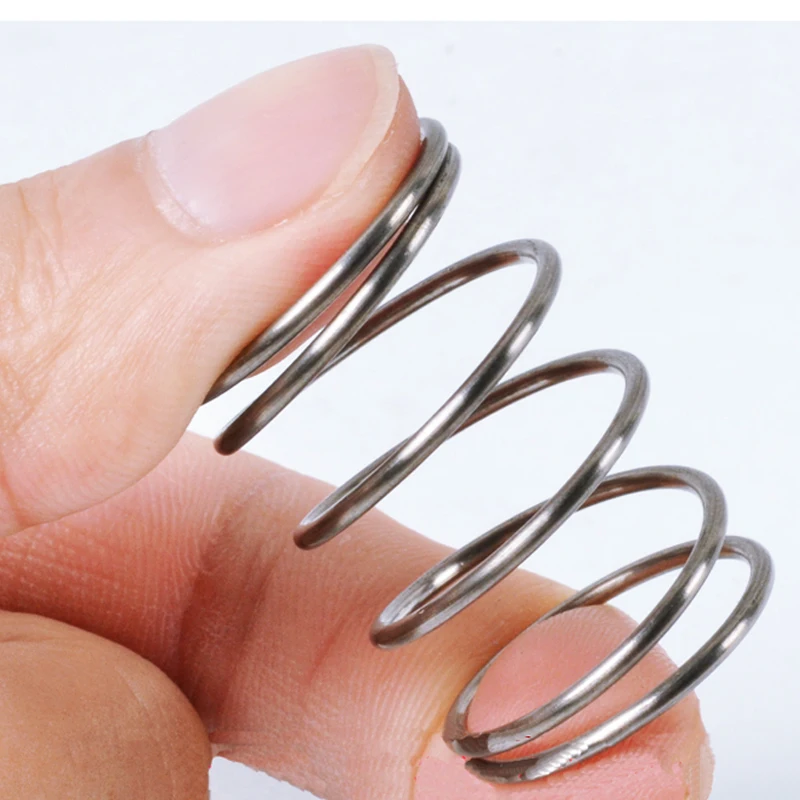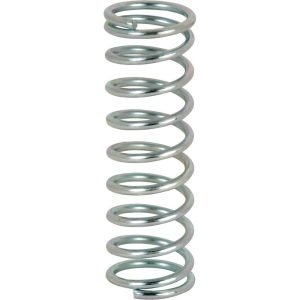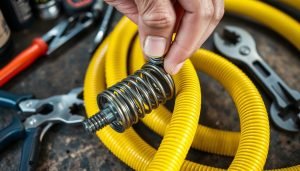Springs are adaptable mechanical parts that can deform to store and release energy. Whether springs lengthen or shorten when wound or otherwise altered is one of the most often asked topics regarding springs. Depending on the kind of spring and its intended application, the response varies. The behavior of winding springs, their stiffness, how length affects torsion springs, and the strength of shorter springs are all covered in this article.
Does the Stiffness of a Spring Change with Its Length?
Stiffness, often referred to as the spring constant ((k)), measures a spring’s resistance to deformation under load. It is a fundamental property that determines how much force is required to stretch or compress a spring by a unit length.
For compression and extension springs, the stiffness is influenced by several factors, including the material, wire diameter, coil diameter, and the number of coils. Specifically, the stiffness is inversely proportional to the number of active coils in the spring. This means that as the length of the spring increases (more coils), the stiffness decreases, and vice versa.

where:
G is the shear modulus of the material,
d is the wire diameter,
D is the mean coil diameter,
N is the number of active coils.
For torsion springs, the stiffness is also affected by the length, but it is more complex due to the rotational nature of the force applied. Torsion spring stiffness is related to the angle of twist per unit length. As with compression and extension springs, increasing the number of coils (and thus the length) will generally decrease the stiffness.
How Does Length Affect Torsion Springs?
Torsion springs operate by twisting around their axis, providing torque to the mechanism they are part of. The length of a torsion spring, which corresponds to the number of coils, plays a significant role in its performance.
1.Torque and Angle of Twist: The length of the torsion spring directly affects the angle of twist it can achieve. A longer torsion spring (with more coils) can twist further before reaching its elastic limit, allowing for greater angular displacement. However, this also means that the spring will produce less torque per unit angle of twist compared to a shorter spring.
2.Energy Storage: Longer torsion springs can store more energy due to their increased capacity for angular displacement. This makes them suitable for applications requiring significant rotational movement over a longer duration.
3.Stress Distribution**: The distribution of stress in a torsion spring is more uniform in longer springs, which can lead to better durability and reduced risk of failure. Shorter torsion springs, while providing higher torque, can experience higher localized stress, potentially leading to earlier fatigue and failure.
Is a Shorter Spring Stronger?
The term “stronger” can be interpreted in different ways depending on the context, such as stiffness, load capacity, or durability.
Durability: The durability of a spring is influenced by the distribution of stress and the material properties. While shorter springs can be stiffer and handle higher loads, they may also experience higher stress concentrations, which can lead to fatigue and reduced lifespan. In contrast, longer springs, with more evenly distributed stress, might last longer under cyclic loading conditions. This is an important consideration when designing systems that utilize spring nuts, as the longevity of both components affects overall performance.
Stiffness: As previously discussed, shorter compression and extension springs are generally stiffer because they have fewer coils. This means they require more force to achieve the same amount of deformation compared to longer springs. In this context, shorter springs are “stronger” in terms of resistance to deformation. When used in conjunction with spring nuts, this increased stiffness can enhance the overall stability of the assembly.
Load Capacity: For compression and extension springs, shorter springs can typically handle higher loads before deforming significantly, making them suitable for applications where high load-bearing capacity is essential. When paired with spring nuts, these springs can provide reliable fastening solutions in heavy-duty applications.
Practical Implications
Understanding the behavior of wound springs is crucial for designing efficient and reliable mechanical systems. For instance, in automotive applications, choosing the appropriate spring length and stiffness can impact the suspension system’s performance and ride comfort. In precision devices like watches, the torsion spring’s length and stiffness must be carefully balanced to ensure accurate timekeeping.
A wound spring’s lengthening or contracting depends on its kind and the way it is adjusted. A spring’s durability and ability to support weight are influenced by its length-related changes in stiffness. The torque, energy storage, and stress distribution of torsion springs are all influenced by their length, which has a significant impact on their performance. Lastly, although shorter springs are frequently stronger and have a larger load capacity, they may also be subject to higher stress concentrations, which could shorten their lifespan. It is crucial to comprehend these dynamics in order to choose the appropriate spring for a given application.






